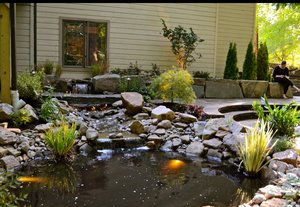Steps of Planning Landscapes
After you have an idea of what sort of garden experience you’d like to create, you’re ready to begin thinking about the design. While the following nine steps do represent a step-by-step process, design is organic, and you’ll likely want to incorporate some of the later steps early in the process. For example, you may make easy landscape maintenance (step nine) part of your wish list (step one). So, as you put together your design with your landscape architect, designer or contractors, make sure to come back to these nine steps regularly, and always look ahead to the next steps.
Step (1/9): Pre-design and Wish-List
Before Beginning a design, you need a basic understanding of what you’re looking for. Outdoor spaces, even more so than indoor ones, are successful to the degree that they create a sense of place—a tall order sometimes, as open air spaces are, by definition, barely contained. Therefore, two-dimensional diagrams are even less effective than house blueprints at conveying what it would feel like to be in that outdoor place. Thus, you need to become adept at visualizing your design each step of the way.
Photographs of the site help to some extent: Pin them up on a wall to help you focus on certain areas and discover details that you wouldn’t normally see standing alongside the property and viewing it as a whole. It’s also a good idea to flip through magazines looking for landscape ideas and to get used to viewing spaces from a variety of angles. Consider the view from your front door, your living room window or even the kitchen sink. Think how you see your landscape now and how you could enhance your viewing pleasure with an improved design. If you haven’t already done so, go out and experience a variety of garden rooms. Walk into, around and through them, making note of what you like and what you hope to avoid. And be practical: If you find that you love the look of a lot of plants and flowers, ask yourself if you also love getting down on your knees in the garden bed.
Lifestyle is also a critical component of design. You should consider how you plan to use the space, and be precise. Do you plan to create a place for reading in a hammock? For taking an outdoor shower? Will you use the space for sitting with a cup of coffee in the morning? If you’re building a walkway, will it need to accommodate wheelchairs or strollers? Asking yourself personal questions about your lifestyle will help you assess both your needs and your budget priorities.

